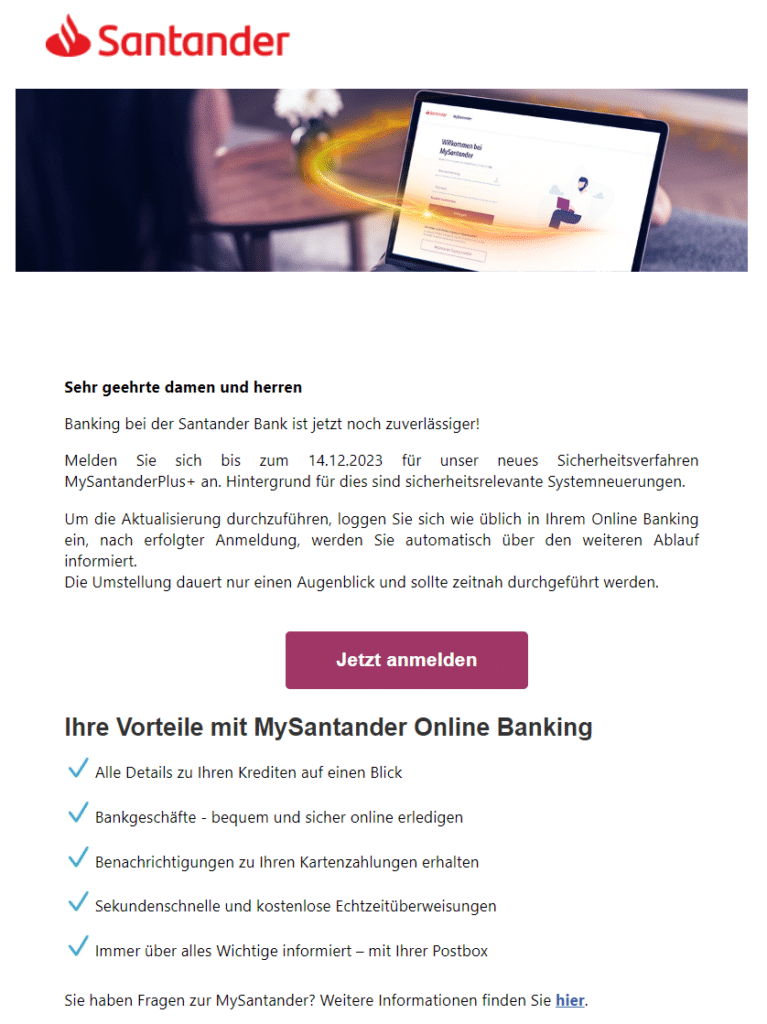A phishing email is currently making the rounds that is supposedly part of a new security procedure. However, the email, which seems serious at first glance, harbors dangerous traps.
The Santander email scam: identifying features
The email with the subject “Banking with Santander Bank is now even more reliable” sounds tempting. It promises more security. But even the salutation shows typical phishing characteristics: incorrect capitalization and lowercase letters.
The content refers to the supposedly new security procedure “MySantanderPlus+”, for which you should register by December 14th, 2023. The reason: “safety-relevant system innovations”. A link is offered for the update, which supposedly leads to online banking.

Why this email is dangerous
In addition to the incorrect spelling and the dubious sender address, there are other warning signs. One obvious mistake is the name of the security system in the email: “MySantanderPlus+”. The double “+” (as a word and symbol) is unusual and suspicious. Such errors would not occur in an official email from a reputable bank.
How to protect yourself
It is important to recognize such phishing attempts and respond accordingly. Never click on links in suspicious emails or provide any personal information. If in doubt, contact your bank directly via known and secure channels.
Conclusion: Stay alert!
Phishing is a real threat that can affect anyone. The Santander Bank case shows how important it is to be vigilant and question suspicious communications. Protect your personal information and be skeptical when emails ask for sensitive information.
Source: consumer advice center
To stay updated on such scams, subscribe to the Mimikama newsletter You can also use Mimikama's media education offering to expand your knowledge of digital security. Stay informed and safe!
You might also be interested in:
Recognizing phishing traps: How to protect yourself online!
Beware of phishing: How fake PayPal emails deceive.
Attention, your data is at risk: the new phishing trick on Booking.com
Notes:
1) This content reflects the current state of affairs at the time of publication. The reproduction of individual images, screenshots, embeds or video sequences serves to discuss the topic. 2) Individual contributions were created through the use of machine assistance and were carefully checked by the Mimikama editorial team before publication. ( Reason )

